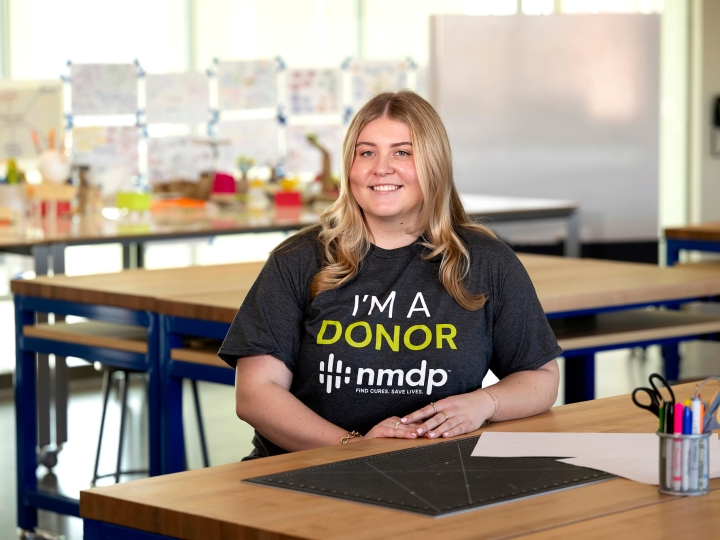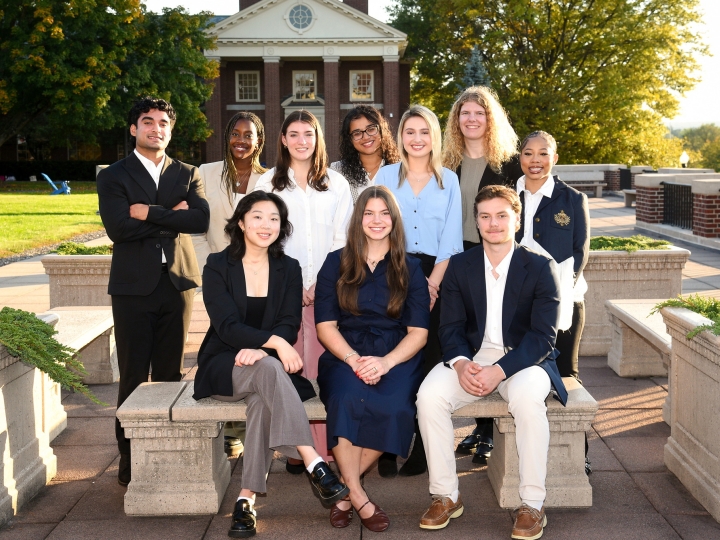Bucknell Professor Jim Baish '79 Will Share in $2.9 Million NIH Grant
April 11, 2016
Just like the heart, arteries and veins, the body's lymphatic system is in a constant state of motion, circulating fluid that plays a vital role in purging the body of toxins and staving off disease. But unlike the circulatory system — essentially a simple pump and pipes — the way our bodies control and regulate the flow of fluid through the lymphatic system is not well understood.
Bucknell University Professor Jim Baish '79, biomedical engineering and an international team of researchers are hoping to improve that understanding in a project that could eventually help those whose lymphatic function has been disrupted by cancer treatment or disease.
Baish is a co-investigator on a recently awarded 5-year, $2.9 million grant from the Heart, Lung and Blood Institute of the National Institutes of Health, which was conferred to Massachusetts General Hospital and Harvard Medical School to analyze how the lymphatic system transports fluid through the body. Of that grant, approximately $350,000 is dedicated to Baish and his lab at Bucknell.
The team's research could contribute to the development of drugs that help patients with compromised lymphatic systems, such as those who had lymph vessels and nodes removed in cancer treatment.
"There are medicines that regulate blood pressure and heart rate, but there are no drugs that manage lymph flow and there are disorders that mess it up," Baish said. "For example, elephantiasis, a parasitic infection that blocks the lymphatic system, causing extreme swelling, is a lymph-pumping disorder.
"After cancer treatment if lymph vessels and nodes have been removed, patients will often suffer from swelling," he continued. "We hope by the end of our 5-year study to have examined some different drugs or chemical interventions that could help to control or improve the pumping function of the lymphatic vessels."
The lymphatic system plays a vital role in collecting and recirculating fluid that leaks out of the circulatory system, eliminating toxins and waste from the body and transporting disease-fighting immune cells through the body. But unlike the circulatory system, the lymphatic system isn't powered by a pump and it isn't even connected to the brain. Instead, it seems to regulate itself, as individual chambers joined by one-way valves contract and relax in reaction to one another to squeeze lymphatic fluid along. Scientists don't fully understand how those chambers work together to keep the lymphatic fluids moving, Baish said.
"It's hard to imagine how you could coordinate this system so that it actually moves things in any organized way," Baish said. "It isn't as if there is some part of the brain hooked up to nerves that control it; there isn't."
Baish and his research partners' work to understand the lymphatic system is part of a new trend in medicine called systems biology. For a half-century, biologists have worked to understand the human body at increasingly smaller scales. "They've learned a tremendous amount about how cells and tissues work at a very detailed molecular level — that's the triumph of molecular biology and genetics," Baish said. "The challenge then is to start to put the pieces back together." The 21st-century approach of systems biology examines how behaviors emerge from the individual parts in a system.
To explain what he means by "emergent behavior," Baish gives the engineering example of a home thermostat. Individually, a temperature switch, thermometer and furnace can't regulate a constant temperature in a room, but linked in a system, they can.
"I have a background in systems engineering, as well as mechanical engineering and bringing together the parts and seeing how the system as a whole works is what systems engineers do," Baish said. "Through computer modeling and mathematics, we're able to look at behaviors that emerge from biological systems. In the body, this kind of emergent behavior almost seems to possess a kind of intelligence. I'm not suggesting it is intelligent, but it's the kind of behavior you see in biological systems when you start putting the pieces back together."
The Heart, Lung and Blood Institute grant will allow Baish to conduct computer and mathematical modeling of lymph transport at Bucknell and to work in Boston with his partners — some of whom have collaborated with Baish for more than two decades. It will also support a Bucknell student, Luke Riexinger '17, as a summer research intern in Baish's lab.
"I am working on building a physical model of the lymphatic system," Riexinger said. "Through this research, I am given the opportunity to use my knowledge of engineering principles to try to mimic the human body. This is a unique project for an undergraduate because I am able to work alongside Dr. Baish and share my research with others in the field."
"He'll get to go and work by my side in Boston for some of this summer as well," Baish added.

